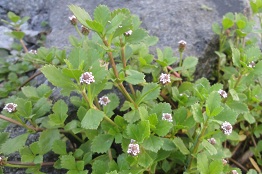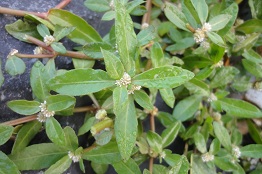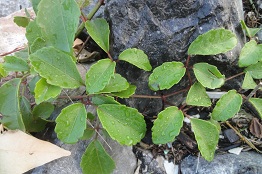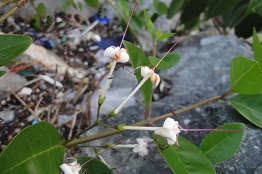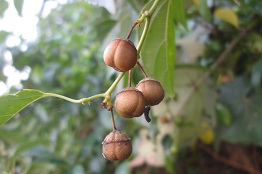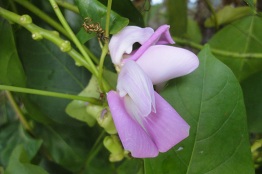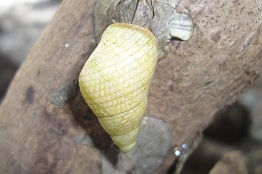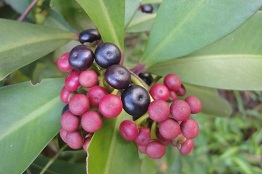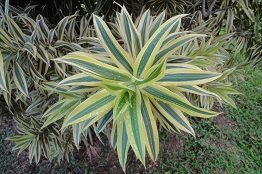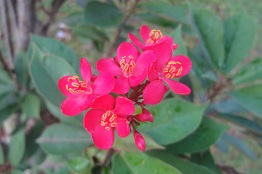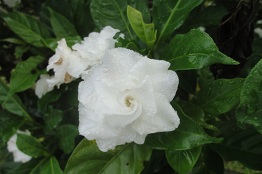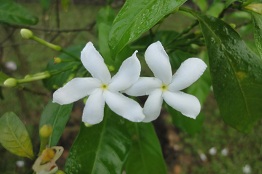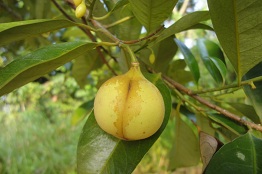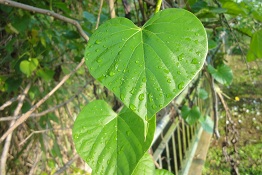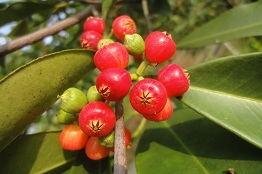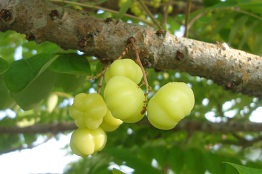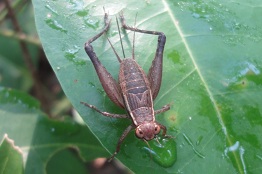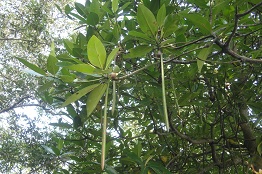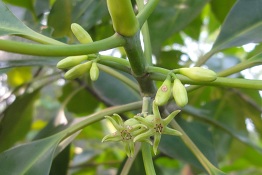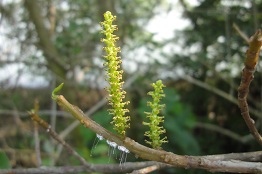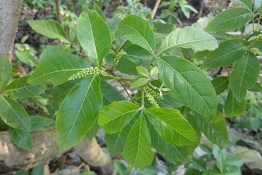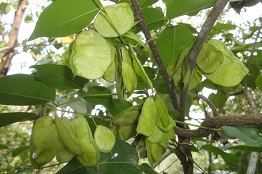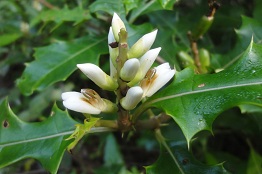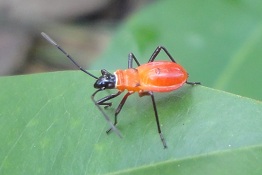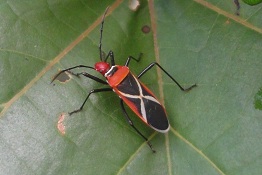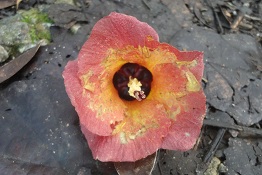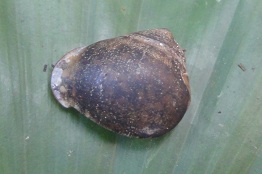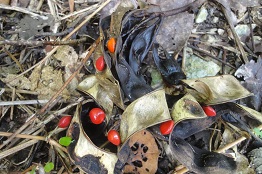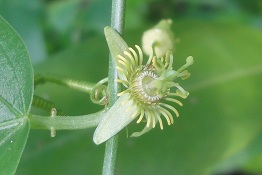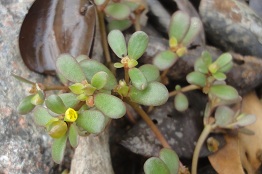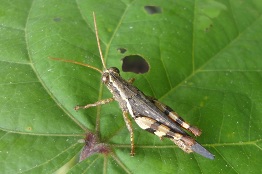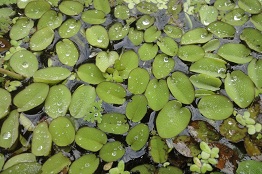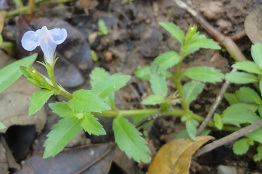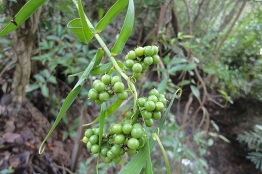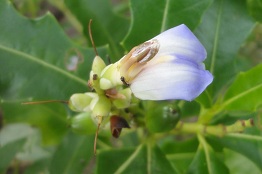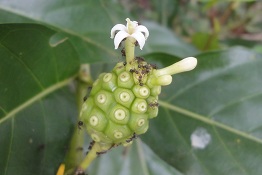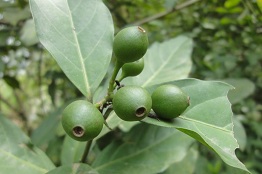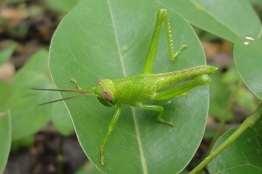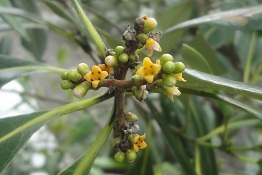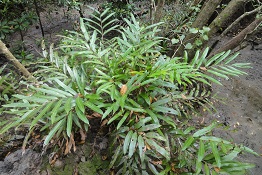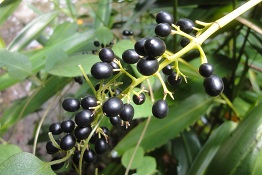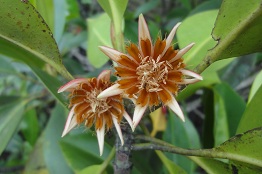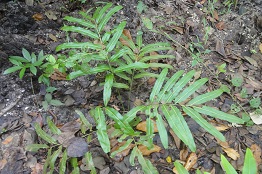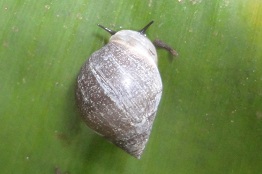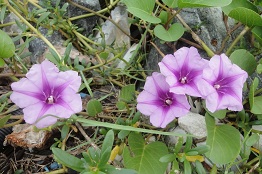Highlight:
Believe it or not, I had not set foot at Sungei Buloh Wetland Reserve (SBWR) for almost a year. The last time I came by was in October last year. Today, I started rather early and was at my start point, bus stop at the Kranji carpark, at around 7 am. The Kranji Trail had been closed for a while now for development work. I spent some time exploring the Kranji Reservoir Park before walking toward the Reserve. By the time I arrived at the entrance of the Reserve, it was around 9 am.
This trip had resulted in the addition of 2 more new plants to my website. One of them was found in the Reserve and the other one was located outside.
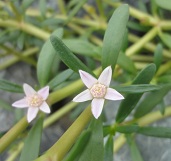
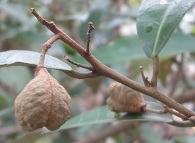 The first find outside of the Reserve along a rocky area facing
the sea was Sea Purslane (Sesuvium portulacastrum). To my surprise, there were
plenty of them at the area. The light pink flowers were not in bloom yet when I first saw them as it was still early in the morning. In
order to get the pictures of the flowers, I took another long walk back to the location at noon time after completing the round in the
Reserve. This particular seaside creeper has been on my search list for quite a while.
The first find outside of the Reserve along a rocky area facing
the sea was Sea Purslane (Sesuvium portulacastrum). To my surprise, there were
plenty of them at the area. The light pink flowers were not in bloom yet when I first saw them as it was still early in the morning. In
order to get the pictures of the flowers, I took another long walk back to the location at noon time after completing the round in the
Reserve. This particular seaside creeper has been on my search list for quite a while.
The other find was a shrub, Dungun Air (Brownlowia tersa), in the Reserve. There were some heart-shaped fruits on it. At first, I thought it was Dungun (Heritiera littoralis), a tree with silver-underside leaves.
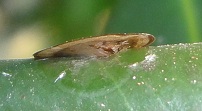
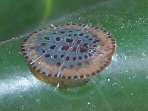
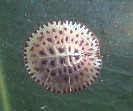 Guess what was this tiny saucer-like creature found on the
surface of a leaf? The first possible creature that came to my mind was
Tortoise Beetle. It was not a beetle because it did not move away when I touch
it. Also, it was rather flat. The next suspect would be a scale insect although the size was considered rather large for a scale insect.
After making some checks, it turned out to be a scale insect, Paralecanium sp. (Family: Coccidae). The host plant was
Freshwater Mangrove (Carallia brachiata).
Guess what was this tiny saucer-like creature found on the
surface of a leaf? The first possible creature that came to my mind was
Tortoise Beetle. It was not a beetle because it did not move away when I touch
it. Also, it was rather flat. The next suspect would be a scale insect although the size was considered rather large for a scale insect.
After making some checks, it turned out to be a scale insect, Paralecanium sp. (Family: Coccidae). The host plant was
Freshwater Mangrove (Carallia brachiata).
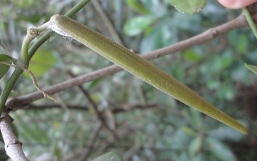
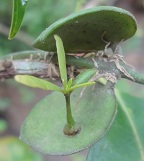
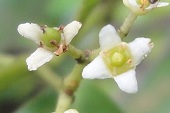 Two other interesting discoveries were the tubular fruit of the
Ant Plant (Dischidia major) as well as the flower of the mangrove tree,
Barak Laut (Cassine viburnifolia). Ant Plant is a common semi-parasitic climber at
the Reserve but Barak Laut is considered a rare tree in Singapore even in mangrove area.
Two other interesting discoveries were the tubular fruit of the
Ant Plant (Dischidia major) as well as the flower of the mangrove tree,
Barak Laut (Cassine viburnifolia). Ant Plant is a common semi-parasitic climber at
the Reserve but Barak Laut is considered a rare tree in Singapore even in mangrove area.
On one of the leaf of the Ant Plant, there was a small plant growing on it. It might be a young parasitic plant.
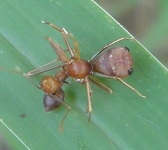
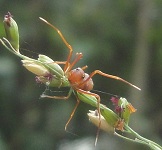
Next was my favourite spider, the
Ant Mimicking Crab Spider (Amyciaea lineatipes). Two of them were
spotted on the Buffalo Grass (Megathyrsus maximus) by the side of the track. One had
caught a Weaver Ant (Oecophylla smaragdina). In fact, the spider looks
like a Weaver Ant. This resemblance enables it to remain undetected by the ant while it waits for the opportunity to catch its prey. There
was an article on such mimicry phenomenon published in the
Nature in Singapore journal.
It is probably going to be many months later before I come by the place again. The main reason is the likelihood of finding new plants in this area is lower when compared to the forests. Hopefully, the construction work around the area would be completed soon and I will be able to explore the new facility at the Kranji Trail area in my next trip here.
Photo Gallery:
Below are selected photos from this trip arranged according to the sequence that they were taken. There is a text link under the photo that will direct you to more photos of the same species if they are available in my website.
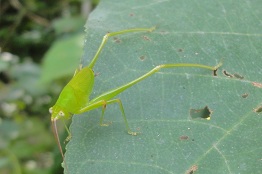
DSC09294
Katydid
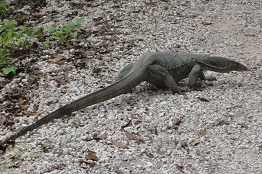
DSC09358
Varanus salvator
(Malayan Water Monitor Lizard)
Statistics:
